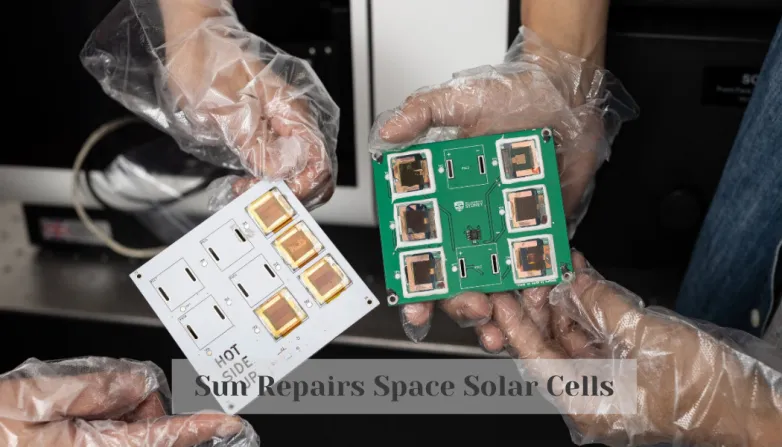Sun Repairs Space Solar Cells
- Discover how researchers from the University of Sydney achieved 100% efficiency in perovskite solar cells after being damaged by proton radiation in low Earth orbit. Learn about their innovative combination of hole transport material and dopant, plus the discovery of fluorine diffusion being the cause of cell degradation.

Researchers from the University of Sydney have demonstrated that perovskite solar cells can recover up to 100% of their original efficiency after being damaged by proton radiation in low Earth orbit. To achieve this, they used an innovative combination of hole transport material and dopant that was radiation resistant. They also used ultrathin sapphire substrates that are ideal for commercial applications due to their high power-to-weight ratio. Through chemical analysis, the team found that fluorine diffusion from the dopant was the cause of the cell degradation. Further, they were able to show that heat treatment in vacuum could reverse the degradation caused by proton-radiation. This research could help the development of light-weight solar cells for future space applications.
Can Perovskite Solar Cells Recover From Radiation Damage?
- Perovskite solar cells are now able to recover up to 100% of their efficiency after being damaged by proton radiation in low Earth orbit.
- This was achieved through an innovative combination of hole transport material and dopant that was radiation resistant.
- Ultrathin sapphire substrates were used for their high power-to-weight ratio, making them ideal for commercial applications.
- At the cellular level, fluorine diffusion from the dopant was identified as the cause of degradation.
- Heat treatment in vacuum was able to reverse the degradation caused by proton-radiation, allowing for recovery of the cell efficiency.
- This research opens up possibilities for the development of light-weight solar cells for future space applications.
Also read


